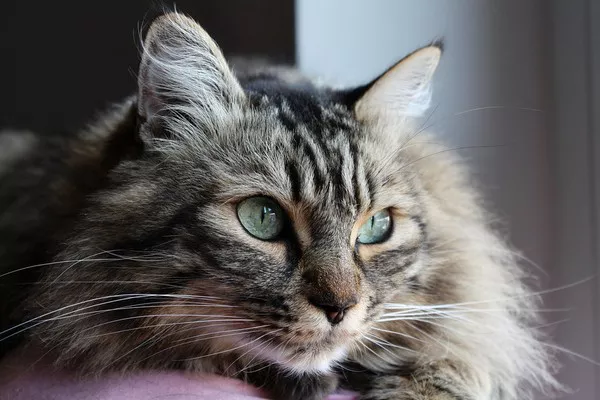Cats, known for their independent and enigmatic nature, are increasingly surprising pet owners with their ability to learn and communicate. One fascinating trend gaining popularity is training cats to use buttons to convey specific messages or requests. In this comprehensive guide, we explore the art of teaching cats to use communication buttons, offering insights, tips, and a step-by-step approach. Understanding the nuances of feline cognition and communication can lead to a deeper connection with your furry friend and unlock their potential for expressive interactions.
Feline Communication: Decoding the Silent Language:
Cats communicate through a combination of vocalizations, body language, and subtle cues. While they may not possess the vocal range of dogs, cats are highly adept at expressing their needs and emotions. Training them to use buttons enhances their ability to convey specific messages, creating a unique channel of communication between you and your feline companion.
The Benefits of Button Training for Cats:
Expression of Needs:
Button training allows cats to express their needs, such as hunger, thirst, or the desire for attention, in a more specific manner.
Reduced Stress:
Clear communication can reduce frustration and stress for both the cat and the owner, fostering a harmonious living environment.
Intellectual Stimulation:
Training cats to use buttons engages their cognitive abilities, providing mental stimulation that contributes to a healthier and happier feline.
Bonding Experience:
The training process strengthens the bond between the cat and the owner, fostering a deeper understanding and connection.
Choosing the Right Buttons:
Selecting suitable communication buttons is a crucial first step in the training process. Consider the following factors:
Durability:
Opt for durable buttons that can withstand repeated use, as cats may engage with them enthusiastically.
Size and Texture:
Choose buttons of an appropriate size for your cat’s paws, and select textures that are comfortable for them to touch.
Visual Appeal:
Buttons with clear and distinct visuals can aid in faster learning. Consider buttons with symbols or images representing specific actions or needs.
Sound Features:
Some buttons emit sounds when pressed, which can add an auditory element to the communication process. However, ensure the sounds are not distressing for your cat.
Step-by-Step Guide to Button Training:
Introduction to Buttons:
Allow your cat to explore the buttons without any specific expectations. Place them in an accessible and familiar location, encouraging natural curiosity.
Positive Associations:
Create positive associations with the buttons by placing treats or favorite toys nearby. This encourages your cat to associate the buttons with positive experiences.
Basic Commands:
Introduce basic commands such as “touch” or “press” while gently guiding your cat’s paw to the button. Reward them with treats or praise for any interaction with the button.
Associating Buttons with Actions:
Attach specific actions or needs to each button. For example, associate the button with a picture of food with the act of feeding. Consistency is key in reinforcing these associations.
Repetition and Reinforcement:
Practice regularly and reinforce positive behavior consistently. Use treats, affection, or play as rewards for successful button interactions.
Gradual Expansion:
Introduce additional buttons over time, expanding the range of commands or messages your cat can convey. Ensure each new button is associated with a clear action or need.
Observation and Understanding:
Pay close attention to your cat’s responses and expressions. Over time, you may notice specific patterns in their button usage, indicating a growing understanding of the communication process.
Patience and Adaptability:
Be patient and adapt your approach based on your cat’s progress. Some cats may grasp the concept quickly, while others may require more time and encouragement.
See Also: A Guide to Training Your Cat to Use Buttons for Communication
Common Challenges and Solutions:
Lack of Interest:
If your cat shows disinterest, reintroduce positive reinforcement and make the training sessions more engaging. Experiment with different treats or toys to capture their attention.
Confusion:
Simplify the training process if your cat appears confused. Focus on one button and its associated action before introducing additional commands.
Inconsistency:
Consistency is crucial for successful training. Ensure that everyone interacting with the cat follows the same button commands and reinforces positive behavior consistently.
Limited Vocabulary:
While some cats may learn an extensive vocabulary, others may have a more limited repertoire. Tailor the training to your cat’s capabilities and focus on essential commands.
Advanced Button Training:
Once your cat has mastered the basics, consider exploring advanced button training techniques:
Emotional Expression:
Introduce buttons that represent emotions such as happiness, boredom, or stress. This allows your cat to convey their emotional state more effectively.
Environmental Requests:
Teach your cat to communicate specific environmental requests, such as requesting access to a specific room or indicating a desire to go outside.
Interactive Play:
Incorporate buttons into interactive play sessions, allowing your cat to request playtime or specific games.
Conclusion:
Training your cat to use buttons for communication is a rewarding endeavor that enhances the depth of your feline-human connection. By understanding the principles of feline communication, choosing suitable buttons, and following a patient and positive training approach, you can unlock your cat’s potential for expressive interactions. Whether conveying basic needs or expressing emotions, button training offers a glimpse into the intricate world of your cat’s thoughts and desires. Embrace the journey of discovery and communication, and revel in the unique bond that flourishes as you and your cat navigate the fascinating realm of feline language.



























